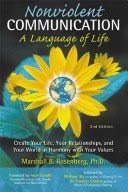We've noticed that coaching and counselling, psychological help, help in starting up your own business or creating your own website is are services that are expensive. Prohibitively so.
Personally this has meant that it's been difficult for me to find clients for my online coaching business. Not because there aren't many people out there who suffer from the long term effects and affects of Childhood Sexual Abuse, but because they can't afford to hire a counsellor to help them through the healing.
That all is about to change. Ten Bucks aims to be a movement towards making these types of services (and many others) available to the average Joe. Shooting for a market of lower to middle incomes, we aim to provide services and challenge people to provide their own. Get a lawyer for Ten bucks, an artist to design your logo, build your website for Ten bucks an hour (or per page, up to the provider to make that decision).
The best part is that people who are now working menial jobs, barely getting by, working their tail off for a boss can use the services of Ten bucks to break out of their poverty and to follow their dream.

Far from being a rekindling of the American Dream, which appears to be geared towards rampant consumerism, this is all about producing your own dream, living your own passion on the scale you want. Do you want to be as big as Disney? We'll help you get started. Do you want to be a professional service provider, good at what you do and proud to be independent? We'll help you get started. Do you just want to put your skills to work on a small scale? We'll help you get started. It's what your dream is all about that counts.
Everything at Ten bucks, as you might have guessed by now, costs Ten bucks. The three initiators are accomplished professional coaches and trainers. Instead of going for the big bucks we go for Ten bucks. We feel that even if our services costs only Ten bucks we can make a decent living and have a lot of fun for our money.
We're in the process of writing our business plan and already we're dreaming about the possibility of going international. Big dreams, not of making big money, but of making the Ten bucks movement big enough to have a coach on every streetcorner, teaching people how to make the most of their dream.











































